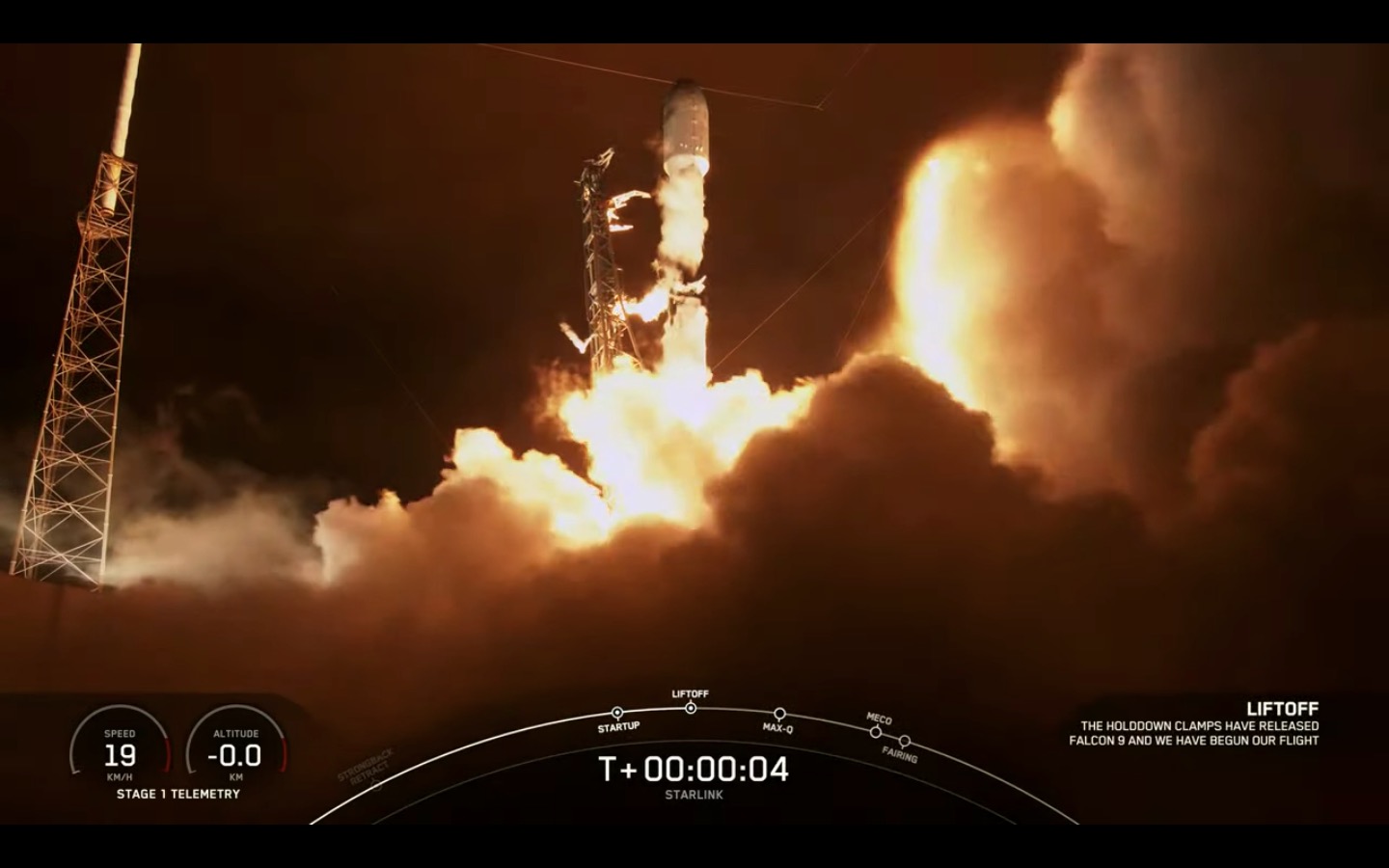A SpaceX Falcon 9 rocket flew for an unprecedented 12th time Saturday (March 19) and came back down to Earth for yet another successful touchdown.
The two-stage Falcon 9 lifted off from Florida's Cape Canaveral Space Force Station at 12:42 a.m. EDT (0442 GMT) on Saturday, carrying 53 of SpaceX's Starlink internet satellites toward low Earth orbit.
It was the 12th launch for this Falcon 9 first stage, setting a new record for SpaceX rocket reusability. The booster previously lofted the RADARSAT Constellation mission for the Canadian Space Agency in June 2019; SpaceX's first crewed flight, the Demo-2 mission to the International Space Station, in May 2020; the SXM-7 satellite for SiriusXM in December 2020; and eight other Starlink missions, SpaceX representatives wrote in a mission description.
Related: SpaceX's Starlink megaconstellation launches in photos
Deployment of 53 Starlink satellites confirmedMarch 19, 2022
The first stage aced its 12th landing as well, coming down for a pinpoint touchdown about nine minutes after liftoff on the droneship Just Read The Instructions, which was stationed in the Atlantic Ocean off the Florida coast.
The second stage continued carrying the 53 Starlink spacecraft to their designated orbit, deploying them all about an hour after liftoff.
Before today's mission, SpaceX had launched 2,282 Starlink satellites, 2,033 of which are currently operational, according to astrophysicist and satellite tracker Jonathan McDowell.
Get the Space.com Newsletter
Breaking space news, the latest updates on rocket launches, skywatching events and more!

The broadband constellation is providing service to customers around the world, including in Ukraine, whose communications infrastructure has been damaged by invading Russian forces. SpaceX has sent Starlink terminals and other hardware to the war-torn nation, a move that has been applauded by grateful Ukrainian government officials.
The Starlink network isn't done growing, as Saturday morning's launch shows. SpaceX wants it to get much bigger, in fact: The company has permission to launch 12,000 Starlink satellites, and it has applied for approval from an international regulator to launch 30,000 more on top of that.
Editor's note: This story was updated at 1 a.m. EDT (0500 GMT) on March 19 with news of the successful launch and rocket landing, then again at 2:09 a.m. EDT (0609 GMT) with news of satellite deployment.
Mike Wall is the author of "Out There" (Grand Central Publishing, 2018; illustrated by Karl Tate), a book about the search for alien life. Follow him on Twitter @michaeldwall. Follow us on Twitter @Spacedotcom or on Facebook.
Join our Space Forums to keep talking space on the latest missions, night sky and more! And if you have a news tip, correction or comment, let us know at: community@space.com.

Michael Wall is a Senior Space Writer with Space.com and joined the team in 2010. He primarily covers exoplanets, spaceflight and military space, but has been known to dabble in the space art beat. His book about the search for alien life, "Out There," was published on Nov. 13, 2018. Before becoming a science writer, Michael worked as a herpetologist and wildlife biologist. He has a Ph.D. in evolutionary biology from the University of Sydney, Australia, a bachelor's degree from the University of Arizona, and a graduate certificate in science writing from the University of California, Santa Cruz. To find out what his latest project is, you can follow Michael on Twitter.
